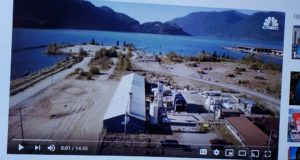Guest post by Jon Dunn
Being intrigued by the idea of crowd-sourcing through companies such as Genius Rocket is one thing, actually taking the plunge and spending donor dollars on the service is quite another. That’s the predicament I found myself in several months ago.
I work as a volunteer for an Indian wildlife organization, Wildlife SOS. In 2005, the organization incorporated in the US and we handle as much for them as we can from this side of the globe. We can’t get out there and save snakes, leopards and bears, but we can help them with their web presence, e-newsletters, etc. A new website had been needed for some time and finally the money was available to get it together.
But when I say money, I don’t mean like, lots of money. I mean, small nonprofit money. For that reason, we looked into every free, low-cost, volunteer, templatized option available out there today. Many seemed “doable” but as everyone does, we wanted more. We wanted a beautiful website that was easy to use and was powered by a powerful but simple CMS that would make maintenance a breeze. But again, our budget was small. The perfect clients, you could say.
I called Michael Mossoba, with Genius Rocket (we met at SXSWi at 3am in the Hilton lobby – ahhhh, SXSW)and we walked through the process of creating a project with their service. Just as in almost any other RFP process, we would lay out all of our requirements, hopes, and dreams and provide the basic creative needed to complete the project. The only difference here is that through Genius Rocket it’s called an RFB (Request For Brilliance – yeah, I groaned too).
Genius Rocket now has more than 10,000 creatives in their “bullpen” so to speak, ready to work on your project. Many only do graphic design, or videography, but many do all of the above. They guided us with a basic cost structure for what they call awards for the winning project. The whole project was uploaded and ready to go from our end, literally within minutes – as previously mentioned, it is critical you gather as much information on your end as to what you need. That is, if you are looking for something specific. If you want to see what 10,000 designers will create, give very few details and you will certainly get back entries that run the gamut.
We offered $1,200 for the winning design, and gave three weeks for entries to be submitted. We asked for a layered .psd of a homepage design. We gave our main navigation points (we worked hard on completely reorganizing the layout through a site-map long before this point) and expressed a chance of further work from the winning designer post-competition for the interior pages.
Entries came in slowly, and I will confess that I felt a little worried at times that we really weren’t going to get anything that seemed usable. The level of work varied greatly from designs that looked like works of art, to others that were clearly from designers just getting their feet wet in the medium.
So who won? Tune in tomm…
 501derful.org
501derful.org




